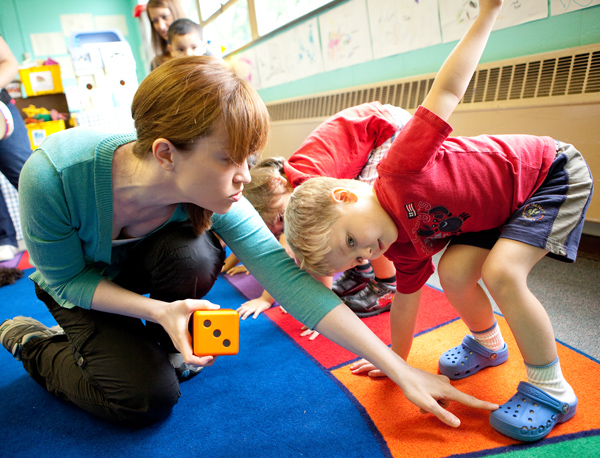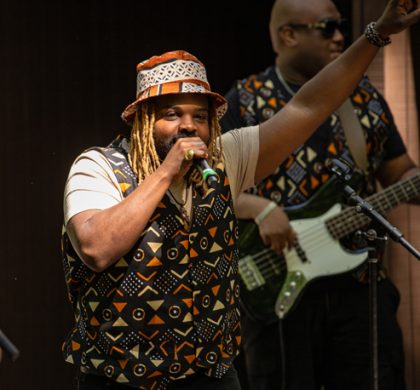Incorporating the “A” in STEAM: Five STEM-Centric Arts Strategies for the Early Childhood Classroom

Jun 01, 2023
What does the “A” in “STEAM” represent and why is it so important? Hedda Sharapahn, an early childhood education advocate who is well known for her work with Fred Rogers Institute, has likened STEAM learning for young children to “appreciating the world around us”: science nurtures a sense of wonder and curiosity in young children; technology teaches them about tools; engineering encourages creative problem solving; and math requires children to describe and compare. The arts can provide helpful tools that educators can use to illustrate STEM concepts and bring them to life.1 Wolf Trap Master Teaching Artist Christina Farrell encapsulates these ideas in a video that can be found on education.wolftrap.org: “An Introduction to STEM in Early Childhood.”
Here are some helpful strategies that Wolf Trap Teaching Artists have developed to help early childhood providers, families and caregivers integrate the arts into STEM-oriented learning, both in the classroom and at home:
Exploring the Water Cycle through Songs and Props
Where does the rain go when it dries? Up, up, up in the sky! Wolf Trap Master Teaching Artist Sue Trainor helps children follow the path of a raindrop through the water cycle, using Graeme Base’s children’s book, The Water Hole, for inspiration.
Exploring Gravity through Story Dramatization
“Gra-vi-ty, pulls things down!” Wolf Trap Master Teaching Artist Sue Trainor demonstrates how early childhood educators can use song, storybox theater, and drama to help children learn the basic principles of gravity.
Using Dance Elements to Observe and Describe Wind
What does wind look like when it’s gentle? How about when it’s strong? Wolf Trap Master Teaching Artist Amanda Whiteman shares how teachers can use dance to help children develop their observation skills, examining wind and force.
Rev your engines, and get ready to move (and count)! Wolf Trap Master Teaching Artist Paige Hernandez demonstrates a dance strategy for combining counting, sequencing, and understanding of quantity with the dance elements of choreography and body awareness.
Find a problem and make a plan! Wolf Trap Master Teaching Artist Paige Hernandez uses hip hop choreography to demonstrate a chant that teaches the six steps of engineering: “Let’s all cheer, I’m an engineer!” To learn more artful strategies for connecting with young children, visit education.wolftrap.org/.
1 Sharapan, Hedda. Fred Rogers’ Approach to STEAM, Fred Rogers Center for Early Learning & Children’s Media, 2019, https://us12.campaign-archive.com/?e=&u=ba841a81845f733029f4c762c&id=f1859811fb
Recommended Posts

“Hip Hop Harmony,” A Lesson in Adapting Musical Experiences for Young Children
Jun 11, 2024 - Education

Using Music to Boost Engagement
Jun 11, 2024 - Education

